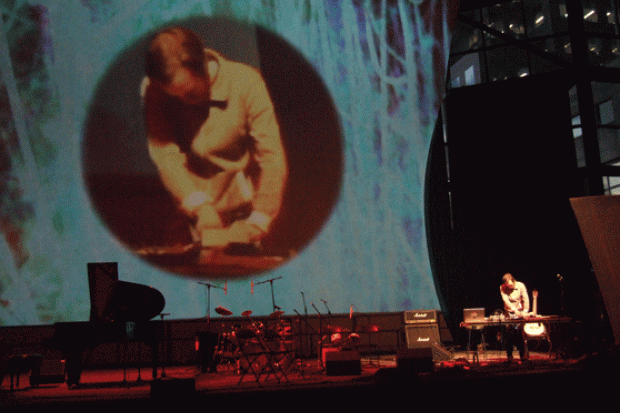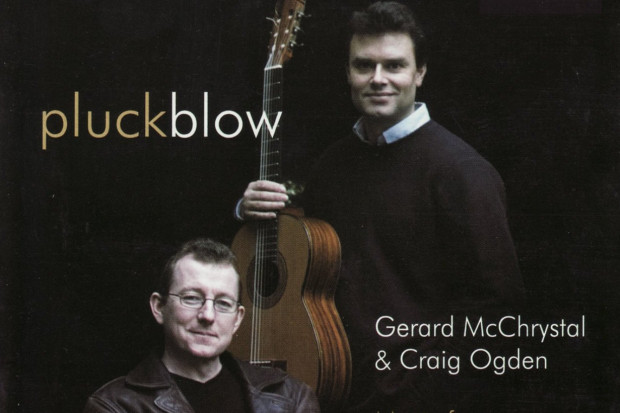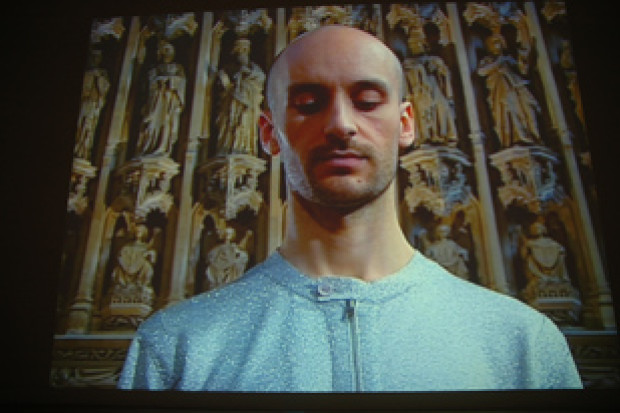New Music: Audiences
Concerts
Thur 22nd April, NCH, RTÉ NSO/ Gerhard Markson,
Seóirse Bodley – Metamorphoses on the Name Schumann
Sat 12th June, O’Reilly Theatre, Belvedere College: Crash Ensemble Gets Grizzly
Sun 13th June, Bank of Ireland Arts Centre, Concorde
CD
Ian Wilson, From the Book of Longing: Music for violin and piano (Hugh Tinney and Catherine Leonard), Riverrun Records RVRCD65
The Audiences
There is so much music to review in this space today that I am not going to include the usual length of musing on pseudo-aesthetic issues such as style. One issue that arises from the selection here, however, is audiences. I am not sure if the situation is the same in other cities, but in Dublin the new music audience is not ‘the new music audience’, for some reason it is mainly a set of disparate audiences.
There is the Crash audience, the RTÉ NSO audience (or maybe NCH audience), the Concorde/Hugh Lane audience… you get the picture. Of course there is a tiny core (of composers and experts?) that turns up everywhere, but the vast majority seems to follow the ‘brand’. Sad, isn’t it?
The NCH attracts shoals of über-middle class Dublin 4-ites. By contrast, Crash Ensemble, when it doesn’t confuse them by moving out of Project, attracts a sharply-dressed, student-y type of person who would never darken the door of any institution that might smack of fusty self-improvement. Their regular audience was, alas, quite unable or unwilling to find them in June when they moved to Belvedere College. And so it goes, mutually repelling (and repellent?) factions defined more by social snobberies and poor geography than any quality resembling intellectual discrimination.
The Concerts
Seóirse Bodley’s music gives the impression that he is an unreconstructed modernist: his music has, over many years, kept the faith with a style that sounds to many like ‘old-fashioned modernism’. This twelve-minute orchestral piece showed that, treated flexibly, there is plenty of expressive potential in the old style yet. The piece inhabited a clear and uncluttered sound-world, so that despite occasional unsubtle elements (big fat octaves on ‘SCHA’ to represent Schumann, and later some annoying piccolo squawks), it comprised drama and logic in a well-balanced framework. A very positive audience reaction appears to indicate that even Schumann fans are now capable of enjoying a light morsel or two from the twenty-first century.
At a wonderfully diverse and badly-attended Crash Ensemble concert the main feature was the premiere of a Kevin O’Connell piece for ten instruments and tape. There were seven pieces altogether in the programme, three pieces by Irish composers – O’Connell, Donnacha Costello and Donnacha Dennehy – and three pieces reflecting Crash’s recent visit to Estonia, from Erkki-Sven Tüür, Helena Tulve, and Kairi Kosk. Also included was Steve Reich’s classic (but almost never performed) Piano Phase.
The programme started with the Reich, a piece which, done well as it was here, defines in one transcendent sweep the strengths and the limitations of classic minimalism. (Unfortunately ‘minimalism’ as a style has become degraded, sweetened and watered-down so much that by now the word seems to be an excuse for a paper mountain of mediocrity, but in 1967 all that was in the future.) By strengths I mean this piece really brings the western concert audience a glimpse of non-western listening (and inner rhythm). The limitation lies in the purity of the concept: only a few pieces that match the simplicity and purity of the minimalist principle are truly necessary, the rest are surplus.
The concert as a whole worked extremely well, and Crash on this occasion showed that they can refresh their repertoire while retaining their trademark aesthetic. The new departure here was not, however, the Reich, or any of the Irish pieces – these were typical enough for Crash – it was the trio of Estonian works that were well selected to display varying and unfamiliar approaches to contemporary composition. They didn’t all convince: the Sven-Tüür strayed into lush postmodernism, at times finding a vile combination of styles. Cendres, by Tulve – who, surprisingly, studied with Sven-Tüür – was built of more solid things, finding warmth of expression without cheap effects; an extremely impressive work influenced or produced through spectral techniques. Illumion, by Kosk, was a better example of postmodernism.
Kevin O’Connell’s Apollo and Marsyas actually started out sounding pretty old-fashioned for a Crash selection. At that point one might have been reminded of Birtwistle’s textures and indeed texts. The entry of Apollo, however, marked a stylistic turn, the hitherto solid atonality mellowed in the presence of quasi-tonal and historical elements (Monteverdi), which were handled with restraint (possibly too much). This, and some deliberately grotesque lines, also from Apollo, lent the piece a welcome surreal touch. Fine and delicate instrumental colourings evident throughout the piece reached their zenith at the very end. Structurally, the piece felt weighted down somewhat by its volume of text and its didactic content. The electro-acoustic element had some technical problems, so perhaps that led to that impression. If so, the piece is owed another performance.
Donnacha Costello’s Structure for Processed Sound Material and Sine Waves was a rare example of audio and computer visual done extremely well. Both music and video were austere in their limitation of material, but exciting, and this paid off. Donnacha Dennehy’s Streetwalker finished the programme. The piece was performed by the Bang On A Can All-Stars in Dublin last year (to a much larger audience) and reviewed already here (so get out the JMI back-copies). It’s still a good piece.
The concert by Concorde, the very next day, featured clarinettist Gareth Davis as guest musician. Hearing this with Crash Ensemble’s concert still very fresh in mind I was initially struck by how close in aesthetic and technical quality this concert was to Crash’s ‘product’. The first piece, Magnus Lindberg’s Ablauf, and its gutsy performance, could have been lifted from any Crash concert. The same could go for the aesthetic swerves in the remainder of the programme. The second piece was a massive contrast to the wild and powerful opening: Joji Yuasa’s Solitude, for solo bass clarinet, lived on the border of audibility. Unfortunately the experience was marred by noise pollution from the air conditioning. Malgré la nuit seul, by Konrad Boehmer, was the next piece. The timbres of soprano, clarinet, violin and accordion combined surprisingly well. The accordion’s timbres frequently sat exactly half-way between the sound of violin and clarinet. The piece had a highly original way with texture, where everyone moves in a wave-like way, in and out of phase, with pitches and dynamics bending in sympathy. It did not remind me of any existing school or style, it was tantalising. Sadly the next piece, a very interesting bass clarinet solo by Salvatore Sciarrino, also suffered from competing with the air conditioning, as it explored the world of multiphonics and how they transform slowly with added pressure. Ailís Ní Ríain’s FIRST ABSOLUTE EXECUTION (couldn’t call it unexpected) was five very short movements that sounded in parts hastily written. I was not taken by the film-music quality of much of this, although the second and fourth movements were subtler and well crafted.
Recently released on a new label, Riverrun Records, Ian Wilson’s CD entitled from the Book of Longing includes music for violin solo, piano solo, and the two combined. High Tinney and Catherine Leonard do a beautiful job and are sensitively recorded. This and the remarkable stylistic variety, as it ranges over ten years of this composer’s working life, makes for a CD that may throw up questions, but never flags. Although some of the pieces have been rearranged from versions for other instruments, such as saxophone and alto flute, they all translate well to their new setting. The music, while all just within the contemporary art-music spectrum, varies in flavour across modal, neo-romantic, post-minimal, jazz-tinged and a more complex, tougher style. Even there one can still discern a haunted sense of consonance ruling over dissonance, and a relaxed pace of musical development. The ten years covered are 1991 to 2001, and it is nice to be able to say that the deeper, more satisfying works are all from 1996 to 2001. Four pieces that stand out are Verschwinden, Lim, A Haunted Heart and Spilliaert’s Beach.
Published on 1 September 2004
John McLachlan is a composer and member of Aosdána. www.johnmclachlan.org














